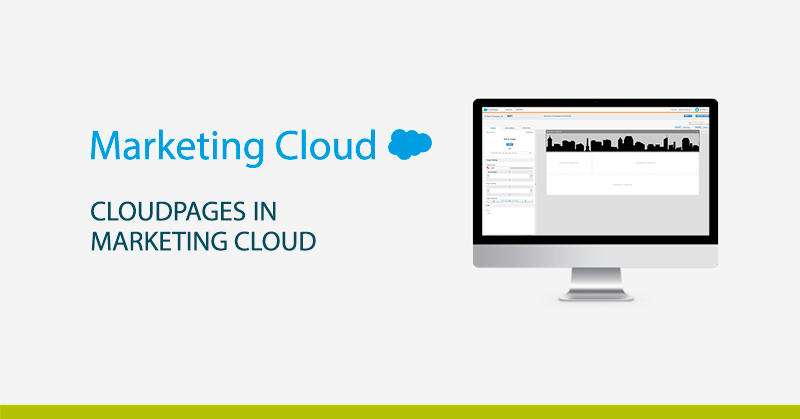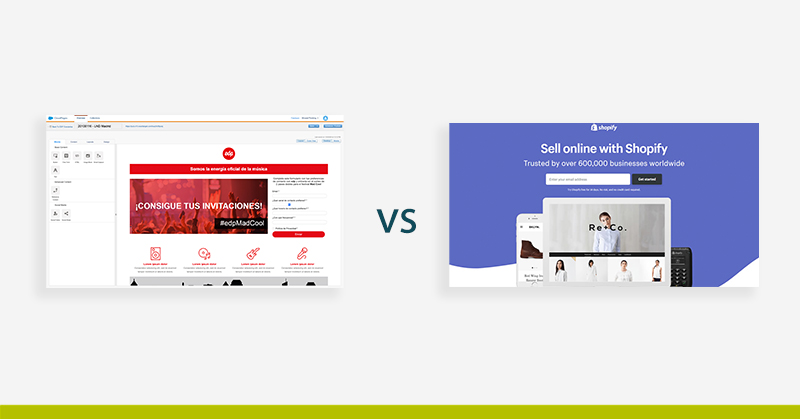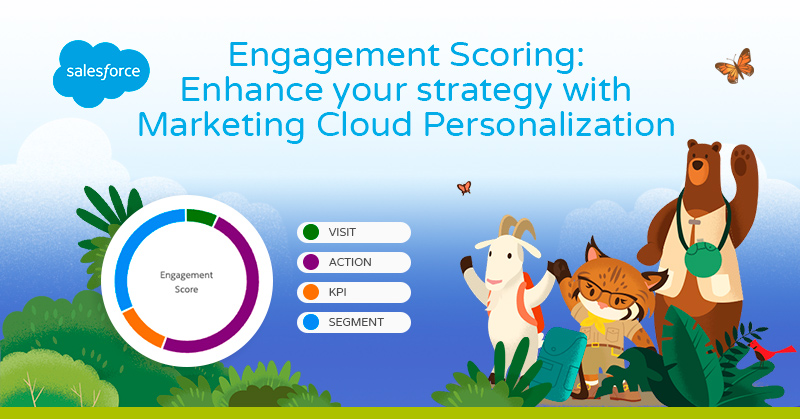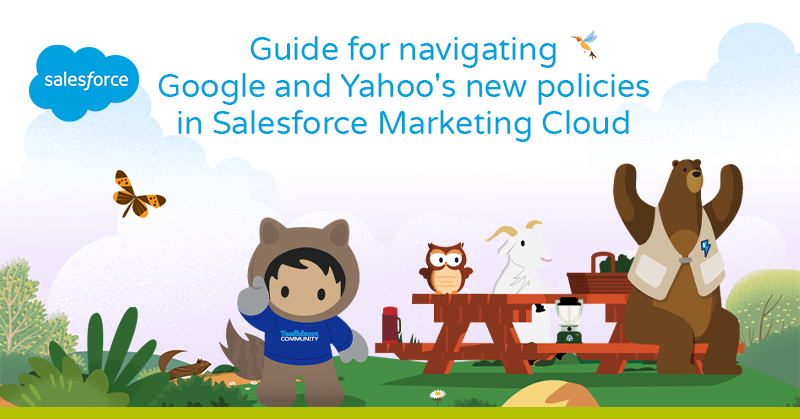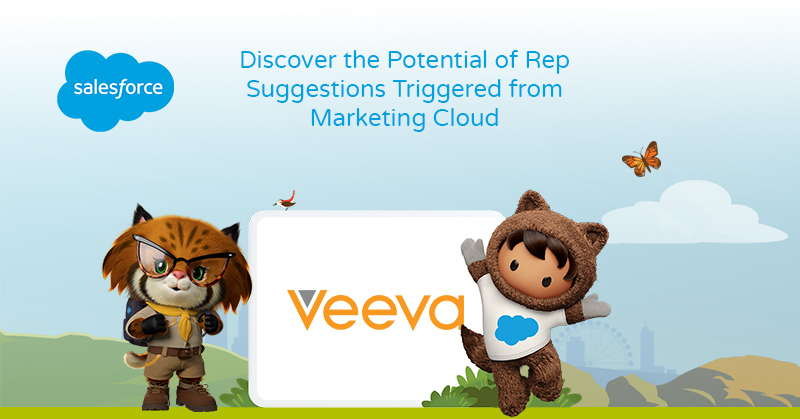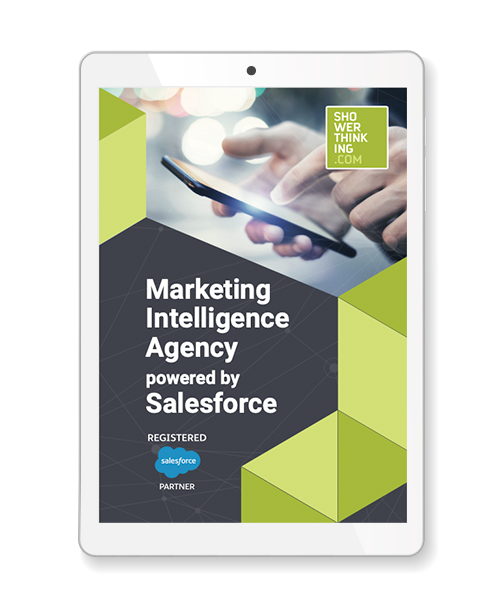As we all know, the Salesforce Marketing Cloud is made up of several modules that cover different areas of Digital Marketing for B2C. The creation of Landing Pages and microsites is a fundamental area in content creation strategies and Cloud Marketing covers this aspect with CloudPages.
CloudPages is a feature of Salesforce Marketing Cloud that allows you to create and publish marketing content for your company, with special emphasis on landing pages and microsites.
After creating the content, you can optimize and customize it for different mobile, social media, and web experiences. You can publish it on the spot or schedule it for later and analyze what you have published to measure its performance in each channel.
If you’re not yet familiar with the Salesforce Marketing Cloud and would like to learn more about the platform’s capabilities, please read the following article to find out What the Cloud Marketing Cloud is all about. The Salesforce Digital Marketing Hub.
CloudPages: Channels and creation
CloudPages supports publishing to these channels:
- Landing Pages
- MobilePush
- Microsites
To ensure that we send emails to our subscribers based on their preferences, we need to create a Landing Page with a form that includes specific fields through which we can obtain this information from the clients.
Creating Landing Pages with CloudPages and Content Builder is a fairly simple process considering the powerful content editor that Marketing Cloud has.
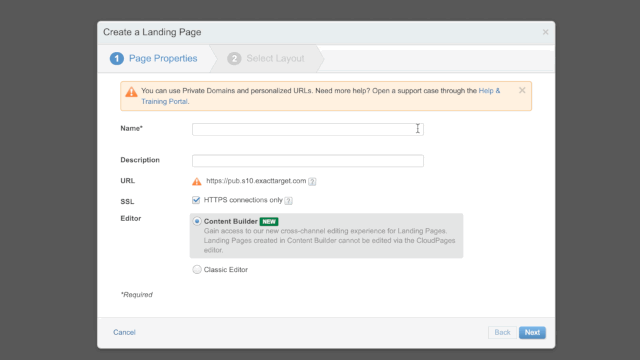
On the other hand, Marketing Cloud recommends the use of an exclusive domain for emailing activities and managing auto-response emails. The configuration of the domain for use with Marketing Cloud requires several DNS entries to work properly.
Main features of CloudPages
The main features of CloudPages allow the creation, editing and publication of content to be streamlined so that it is easy for digital marketers to manage it. Therefore, we highlight the following features:
- A single functionality and a single process for creating usable content across multiple channels.
- Edit by organizing content using gears.
- Drag & Drop interface to create blocks of content
- Ability to edit HTML code and include elements such as code snippets.
- Data obtained from the Smart Capture block is automatically saved in lists and data extensions.
- Adds default versions of content to different content blocks in order to speed up the process of creating CloudPages.
- Design and preview content in the format your customers will see.
- CloudPages has permissions through which we can give editing and publishing permission to different users within the Marketing Cloud.
This way, we will have the contacts from each form stored in different Marketing Cloud extensions with Salesforce’s unique identifiers, so we can immediately impact users and have all the information in Salesforce’s CRM automatically, without the need for queries to retrieve the information.
CloudPages applications in our business
Through the use of CloudPages, we may also create a personalized preference center for our customers, where they can select their preferences regarding our products, decide when they want to receive emails or modify their personal information.
Another clear example of the CloudPages application would be a subscription page for our website, where users can have their own username and password.
AmpScript
A CloudPage can contain AmpScript content. This proprietary scripting language of Cloud Marketing can be integrated as advanced dynamic content into emails and SMS as well as CloudPages.
AmpScript is very useful for extending the functionality of our website. In addition, this programming language allows, for example, to insert, update or delete data and to use automations. Other of its multiple uses are:
- Create surveys
- Measure your customers’ satisfaction with NPS (Net Promoter Score)
- Pre-fill data
- Update data in Salesforce
- Generate Lead Management processes
CloudPages vs Landing Pages
CloudPages are, after all, landing pages hosted on the Marketing Cloud and used within the Salesforce ecosystem. However, they have several differences from a landing page that can be created in an external CMS such as WordPress, Drupal or Magento.
Thus, it is necessary to establish the differences and advantages that the use of CloudPages has over the use of landing pages.
CloudPages
- They are created within the Salesforce Marketing Cloud and can be used within the Salesforce ecosystem.
- They enable centralized content creation and marketing and communications strategy within the different channels offered by Salesforce
- With Content Builder, creating and editing these landing pages is simple and intuitive. No prior knowledge of HTML, CSS, or other programming languages is required.
- Dynamic content can be inserted according to the attributes of our clients, thanks to AMPscript.
- CloudPages allow for easy integration with all Salesforce environment apps, with much greater possibilities for extracting and harmonizing content and data.
- They can be used dynamically to include content in Email Marketing or MobilePush campaigns within the Salesforce Marketing Cloud.
Landing Pages
- They can be created through any CMS (Content Management System).
- If you use any Salesforce app (Salesforce CRM for example), it’s more difficult to centralize marketing and communication efforts through landing pages.
- Depending on the CMS used, the creation and edition of landing pages can be simple or extremely complicated, having to know programming languages or not.
- They do not allow for the inclusion of dynamic content based on the attributes of our subscribers or clients because they cannot be edited with AMPscript language
- Depending on the CMS used, extracting and harmonizing the results achieved through a landing page can be complicated due to integration with apps from Salesforce or other companies.
- Their use within Email Marketing or MobilePush campaigns is more reduced than that of CloudPages as they are not exclusive components of Cloud Marketing.
Conclusions
In short, the use of CloudPages is a very important option if we use Cloud Marketing and we want to see our Communication and Marketing efforts bear fruit. To conclude, we can point out that this Marketing Cloud module also has an option to adjust SEO parameters and its own analytics area where you can see data such as
- Views
- Clicks if you have any clickable element (button, etc.)
- Sending Smart Captures
- Integration with data processing and interpretation tools such as Datorama or Tableau
For all these reasons, CloudPages is a powerful module within the Marketing Cloud as it allows you to create content that complements your email marketing strategies and content, helping to centralize all communication efforts within the Marketing Cloud and can be complemented with other Salesforce apps such as Salesforce CRM.
Therefore, the correct use of CloudPages is a task that requires care and experience, but from ShowerThinking we are specialists in developing together with your company automation and marketing management programs through Marketing Cloud. Therefore, if you need help or training in Cloud Marketing, we have the right team that can help you, so do not hesitate to contact us!

